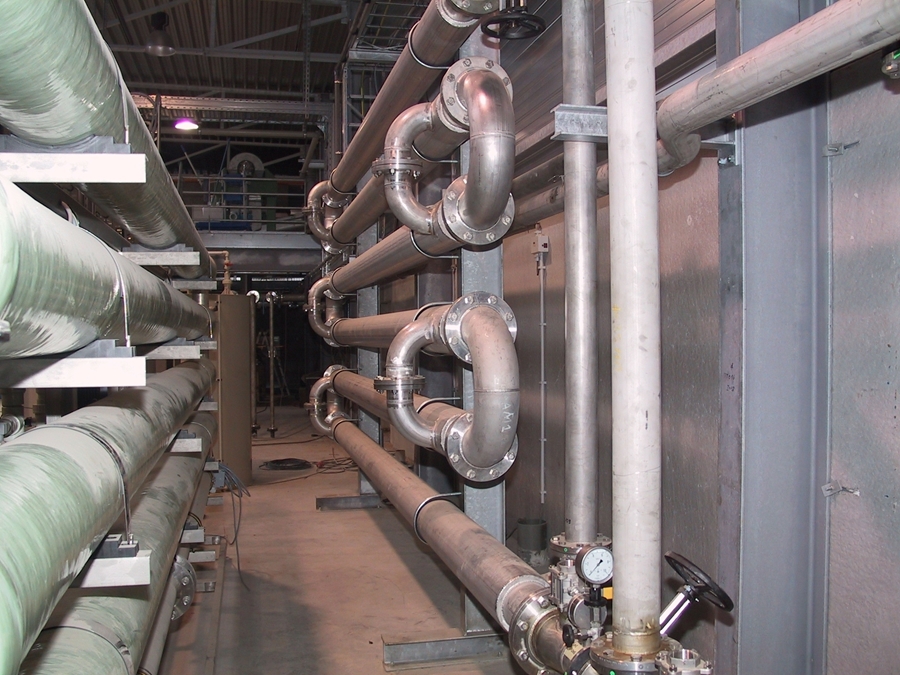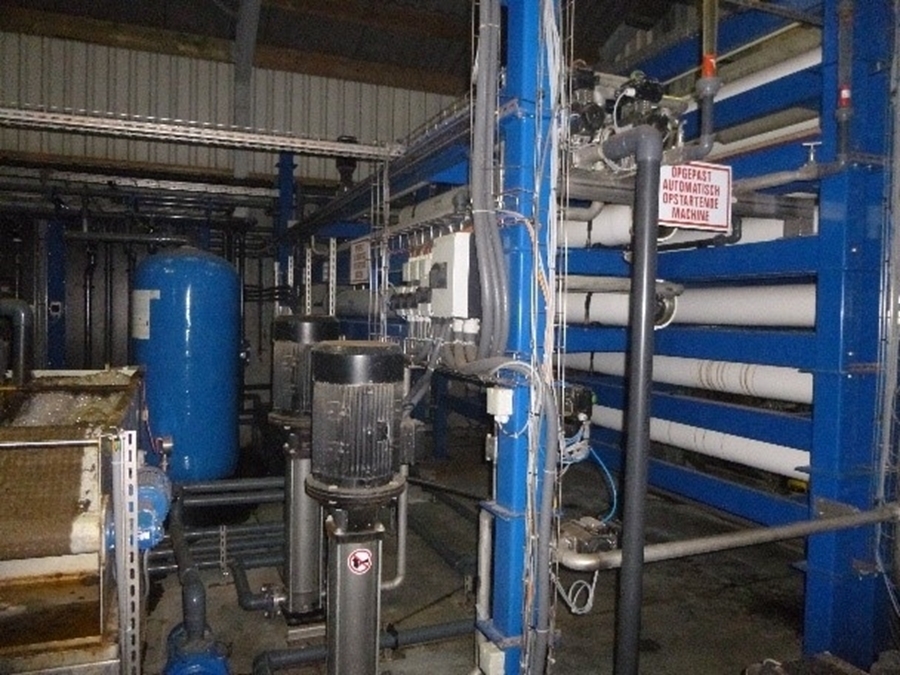- Home
-
Manure processing
-
Manure processing in Flanders
- State of affairs
- Techniques and end products
- Ivan Tolpe Prijs - Manure Processing Innovation Award
- Transition in manure processing
- Publications
- ManuResource conference
-
Manure processing in Flanders
- ManuResource
- Projects
- News
- Organisation
- Contact
- State of affairs
- Techniques and end products
- Ivan Tolpe Prijs - Manure Processing Innovation Award
Membrane filtration

Filtration involves a physical separation, which retains all particles and macromolecules. The input material of membrane filtration is thin fraction (from digestate or manure) after separation, with possibly a pretreatment (paper filter, flotation) to prevent contamination of the membranes. The material is sent under pressure through the membrane.
Depending on the opening of the pores, a distinction is made between microfiltration (pores 0.1 - 5 μm, 0.1-3 bar), ultrafiltration (pores 20 nm - 0.1 μm, 2-10 bar), and reverse osmosis (RO). (0.1-1 nm, 10-100 bar). Micro and ultrafiltration is usually used as a pre-treatment for reverse osmosis (with RO membrane).
Reverse osmosis

A liquid waste stream (eg effluent after biological treatment, liquid fraction after ultrafiltration,...) can be purified by means of reverse osmosis. A membrane with pores of 0,1-1nm separates the liquid stream in a mineral concentrate and purified water. The water can be discharged in surface water when discharge limits are met or can be used on the farm. An ion exchanger is often used as an extra polishing step.
- State of affairs
- Techniques and end products
- Ivan Tolpe Prijs - Manure Processing Innovation Award